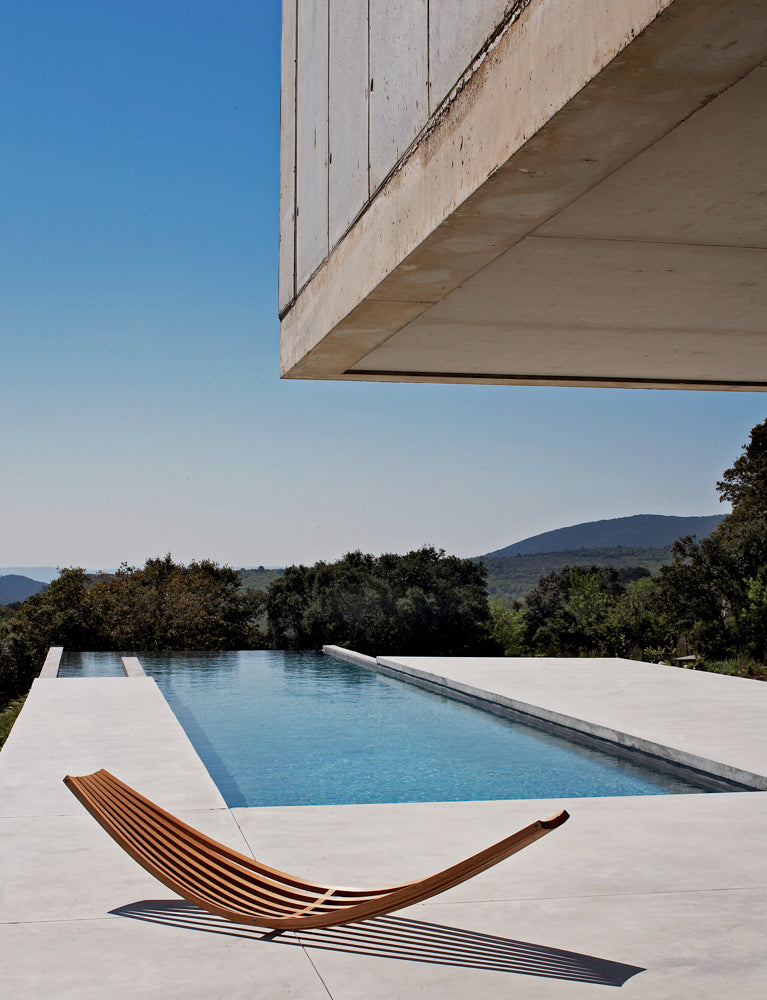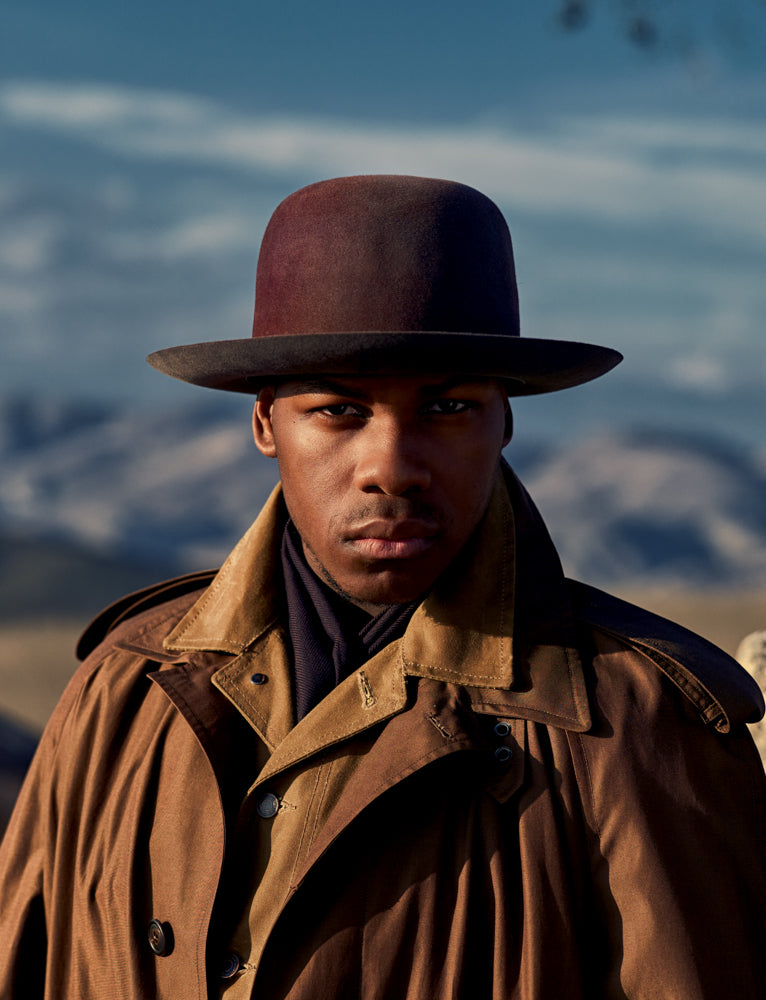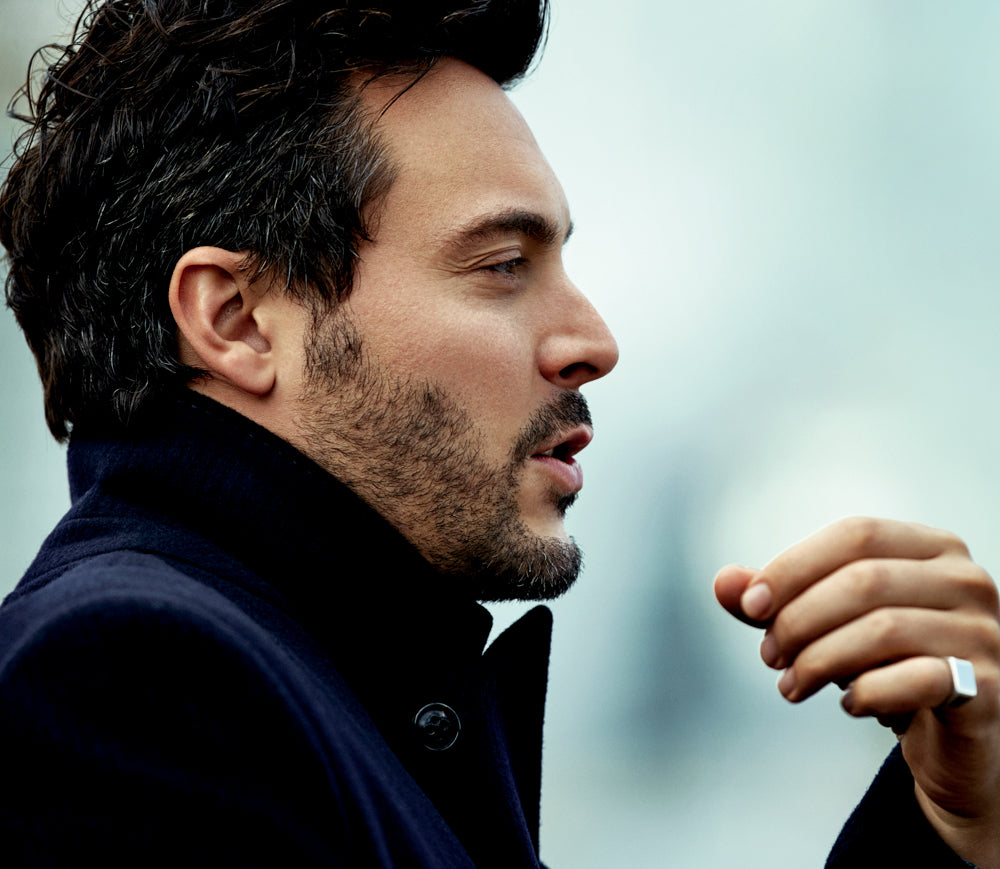
French Connection
FRENCH CONNECTION


STUDIO KO DELIVERS CLASS-A DESIGN
“In architecture it’s almost forbidden to use the word beautiful,” declares Olivier Marty, who in 2000 founded the Parisian architectural firm Studio KO with Karl Fournier, his partner in work and in life. “We believe it’s a word that should be used more often.”
Though they met and studied at L’École des Beaux-Arts, which in the nineteenth century established highly embellished neoclassicism as the French architectural style, Marty and Fournier, both in their forties, de ne beauty more broadly. Their projects include spare yet statuesque modern Moroccan holiday homes for Pierre Bergé, co-founder of Yves Saint Laurent Couture, Fiat heiress Marella Agnelli, and Patrick Guerrand-Hermès. They’ve also designed louche-luxurious Paris apartments and restaurants, industrial-chic boutiques, and sophisticated hotels on three continents. In 2016, the pair will unveil their Yves Saint Laurent museum, a twenty-first-century design steeped in old Moroccan sensibilities, which will stand adjacent to the couturier’s famed Jardin Majorelle in Marrakech.
Encompassing all facets of architecture — from craftsman-focused new construction to renovation and interior decoration of historic buildings — Studio KO’s portfolio is effortlessly photogenic. The Villa K in Tagadert, Morocco, was featured in 2015’s Mission: Impossible – Rogue Nation, and the recently completed Chiltern Firehouse in London, done in collaboration with André Balazs, has become a favorite location for fashion shoots. “Our practice is about never saying the same thing twice,” says Fournier.
“We always imagine a project from its existing context and not from the one we’ve just achieved. We also work to abolish the border between decoration and architecture. When the architecture is good, the only need is beautiful furniture.”


Marty and Fournier’s work is elevated by their classical training and keen attention to the unique materials and building techniques of each location — be it Marrakech or Los Angeles. And the firm’s rigor serves as an antidote to style-over-substance design from those who have migrated into retail and hospitality via the worlds of film and fashion, and even celebrity architects. “There is a certain taste for what we call starchitecture,” says Marty, referencing Frank Gehry and Zaha Hadid, “which is very sad and depressing. We are very uncomfortable with buildings that are just about gesture. Conceptually and technically, architecture should endure.”
Studio KO may have begun in Paris, but it blossomed in Morocco. “We went there by chance seventeen or eighteen years ago and became friends with a French guy who had a great respect for the old Morocco, and we discovered the country through his eyes,” says Marty. Both he and Fournier, the children of bohemians embroiled in the far-left politics of France in the 1970s, hadn’t, as the French say, “fallen in the pot” of Parisian society.
In Morocco, however, they easily met billionaires and aristocrats, earning the first commissions — contemporary homes artfully designed in harmony with the rugged landscapes — that reduced architecture, materials, and décor to their essentials and put Studio KO on the map.
“Maybe it’s a bit vain,” demurs Marty, “but from the inside the houses frame the landscape, and from the outside they give the landscape scale and strength.” Morocco also taught the partners how to use native craftsmanship in architecture, interiors, and objects, he adds. “It completely changed our language and is central to our practice.”

So too, is a sense of story. “When we are doing something for the public, we do not refer to existing hotel and restaurant images. What should come first is not a formal statement of architecture, but a narrative that can be summarized within two sentences,” he explains. The firm approached the Chiltern Firehouse design by imagining what an old-money English family leaving their country estate would bring to their new home inside a London firehouse. “Every time you wonder about any design choice,” says Marty, “you just refer to the story you are telling.”
For private homes, he says, they listen: “You analyze who the person is and translate their character into a place for living. The best project is one where the client has needs and visions. We are trying to pay tribute to a creative process where function is as important as the look, where door handles are designed for use, not just to look nice.” Studio KO takes its cues from a host of predecessors — the Berber peasants who orient their dwellings according to the sun, the simplicity of Shaker furniture, the twentieth-century modernist architecture of Le Cor-busier and Neutra — to unite purpose and style. “There is a nobility in considering the users’ constraints as the matrix of the project,” says Fournier.
On a recent visit to Los Angeles, with his partner a continent or two away, a barefoot Marty lounged on a linen sofa in a suite at the Rose Hotel, a charming 1908 seaside guesthouse said to have been built by Abbot Kinney, the man who designed the canals of Venice, California. Marty was there to work on a house for an Australian client and continue ongoing updates to Balazs’s Chateau Marmont, a project that both he and Fournier characterize as “a humbling exercise of changing everything but in such a way that nobody can notice it.”
The men of Studio KO are complementary opposites, explains Marty. “I can be more constrained; Karl is more of a free thinker. I like A.P.C. and Ami, and for a suit, I would wear Saint Laurent. Karl would go super classic in a Lanvin tuxedo for a formal occasion, but otherwise wears Uniqlo and always finds amazing things at the Zara shops in Morocco.”


“We are very uncomfortable with buildings that are just about gesture. Conceptually and technically, architecture should endure.”
Fournier also has dabbled in clothing design, fashioning a leather tote that looks exactly like a generic black plastic bag. “I only made two copies from a very small piece of leather I found in Senegal and could never find again. You can’t imagine how many people ask for it.” This cheeky, high-low sensibility also informs their interior designs. In old Parisian apartments, they are apt to rip out paneling and leave the scars visible, adding Brutalist steel sconces next to ornate gilt fireplaces. “We have no specific taste for one period or another,” says Marty.
“We’ll put a nineteenth-century wooden sculpture of a dragon next to a Gothic piece next to an Eames chair. It took years for us to accept this schizophrenia as rich and something to be proud of.” The duo recently sold the factory where they lived in the eastern Paris suburb of Montreuil and bought an apartment in a “very poor, very simple, very beautiful seventeenth-century building” in the 1st arrondissement near the Palais-Royal.
Though Studio KO is fast becoming a global concern with o¨ces in London and Morocco, Paris is not only home base, but also a baseline for their evolving aesthetic. “All styles live and meet very well together, but in Paris the spirit is unique,” says Fournier. “One thing I’m sure of is that in Paris more than anywhere else, we can feel that people are bored by over-designed spaces and objects. People don’t want to listen anymore to what designers imagine the future could be. Because each time we have tried to predict what it is going to look like, we completely missed it. So it is time now for something that is simply useful and beautiful.”


